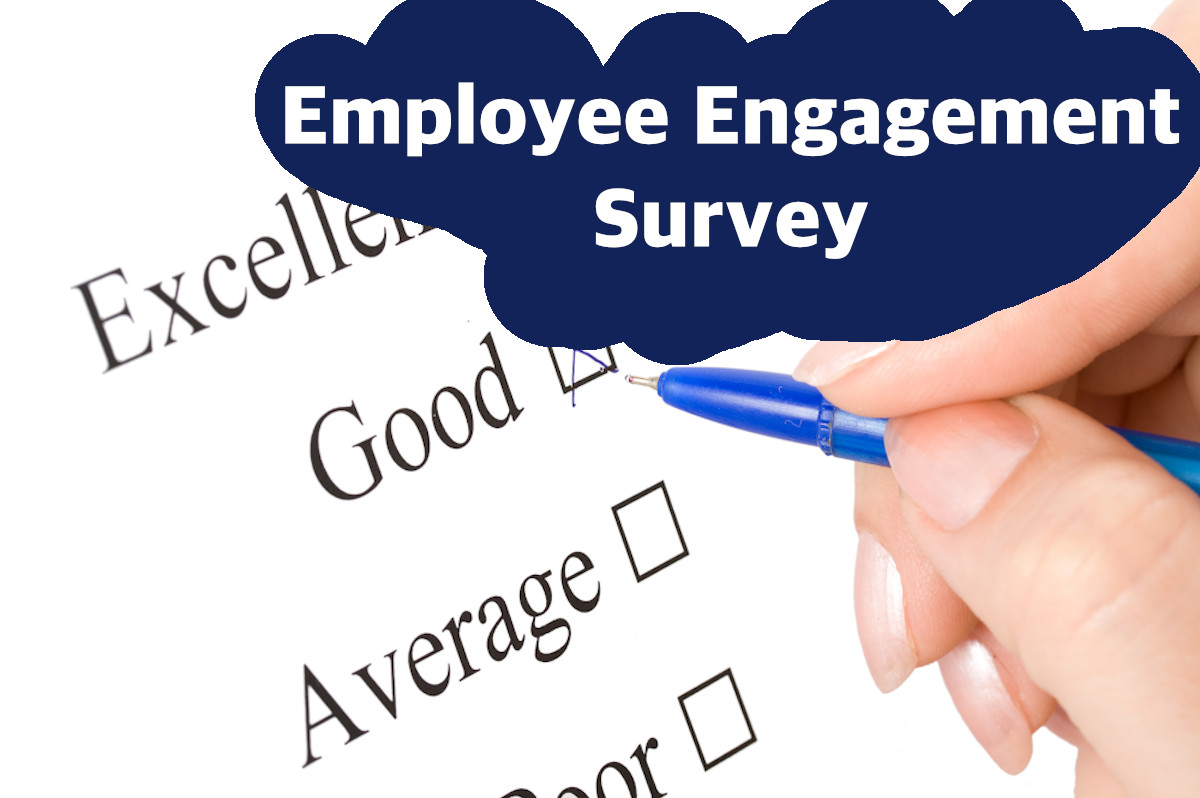This article is part of a series about top ways to create a good work environment visit the main article here.
An employee engagement survey can be a great help or a waste of time and money. It all depends on four things: did you need it in the first place, did you implement changes, did you do a follow up with another survey, and did your employees answer honestly?
The rest of this article will explain each of four things but mainly how to decide if you need an employee engagement survey.
Do you need an employee engagement survey?
Don’t spend money or time on an employee engagement survey if your organization is in good shape. The major way to discover if your organization needs an employee engagement survey is to determine your bad turnover rate.
What is turnover rate?
Turnover rate is the number or percentage of employees you needed to replace in a pervious set amount of time divided by your total employees during that same time. This set time is normally the past twelve months or most recent busy or slow season.
Replacements / Total Employees = Base Turnover Rate
*In general, lower may be better if you consider primarily training costs.
Seasonal Employees
In a busy season you may normally hire additional seasonal temporary employees and during the slow season you may lay these same people off. So, normally, seasonal employee changes are not included in your yearly turnover calculation.
Good or bad?
Unfortunately, we cannot consider turnover rate to be good or bad. As indicated above a high turnover rate in general may cost more in training new employees. Beyond training a base turnover rate calculated does not give proper data for analysis.
Turnover must be calculated in at least three employee segments to help you determine if the turnover is good or bad. The three employee segments are top performers, average performers, and low performers.
Top Performers
You want to keep as many top, good, or superstar performers as you can. It is these people that keep your organization operating when times are hard. So, a low below 5% or 0% turnover is best.
Of all the employees you had to replace in the last twelve months, how many would you consider to be top, good, or superstars? These are the people you wish would have stayed because they had high sales, had excellent customer service skills, or had a positive effect on workplace culture and environment.
As you retain more top performers your organization will improve on many levels.
Top Performers Replaced / Total Employees = Top Performer Turnover Rate
*Lower under 5% or 0% is better!
A high “top performer” turnover rate is very bad and is an indication of major issues in your organization. Revenue may go down along with employee morale. If you are losing top performers, then your organizations ability to weather bad times is in question.
Low Performers
You want to eventually replace your lowest performers if they cannot be trained, coached, or moved to a different role to perform better. It is these people that may hinder your organization especially when times are hard. So, a higher, above 25% or more turnover is best.
Of all the employees you had to replace in the last twelve months, how many would you have considered to be low or bad performers? These people have low or no sales, many customer complaints, or had a negative effect on workplace culture and environment.
As you replace low performers your organization will improve on many levels.
Low Performers Replaced / Total Employees = Low Performer Turnover Rate
*Higher over 25% is better!
A low “low performer” turnover rate may be bad and may mean that your supervisors and managers are not doing their jobs. You want most of your turnover to be in this segment, but supervisors and managers need to be actively identifying, supporting, training, or laterally transferring these low performers.
Average Performers
Average performers will probably account for most of your employees. This employee segment relates most closely to a base turnover rate. This is because the biggest cost in the turnover of an average performing employee is the cost of training a new employee. So, about a 5% turnover rate is best.
Of all the employees you had to replace in the last twelve months, how many would you have considered to be average performers? These people have average sales, average customer complaints, or blend in well with workplace culture and environment.
As you replace average performers your organization will neither improve or decline but stay constant and secure if the turnover rate is low.
Average Performers Replaced / Total Employees = Average Performer Turnover Rate
*About 5% turnover rate is best.
A high “average performer” turnover rate is a bad indication for the organization. There may be multiple issues and now the training cost of new employees will go up.
Example of a bad turnover rate
Let us say our first sample organization has 100 employees. And let us say that 20 employees were replaced in the last twelve months. Base and employee segmented turnover rates were calculated as:
- Base Turnover Rate: 20/100 = 20%
- Top Performers: 10/100 = 10%
- Average Performers: 9/100 = 9%
- Low Performers: 1/100 = 1%
Top Performers are thinking: “I’m not recognized or appreciated here. I know I can get better pay and more advancement opportunities elsewhere.”
Average Performers are thinking: “This work culture and environment sucks. Since the top performers are leaving this place is about to close. I’m leaving for more stability.”
Low Performers are thinking: “These supervisors and managers are no good, so this is allowing me to take it easy and still get paid. With the top and average performers leaving, I may get a chance for an easy promotion. So, I can do even less work but at higher pay.”
Example of a good turnover rate
Let us say our second organization also has 100 employees. And again, let us say that 20 employees were replace in the last twelve months. Base and employee segmented turnover rates were calculated as:
- Base Turnover Rate: 20/100 = 20%
- Top Performers: 1/100 = 1%
- Average Performers: 4/100 = 4%
- Low Performers: 15/100 = 15%
Top Performers are thinking: “I’m recognized and appreciated here. I’m paid well and have opportunities for more pay and advancement.”
Average Performers are thinking: “This work culture and environment is awesome. I have a lot to learn from the high quality of coworkers and training from supervisors and managers. I can see myself in this stable job for the long term.”
Low Performers are thinking: “I’m always busy and want a slower paced work. Despite all the help we are offered here, all my coworkers keep qualifying for the bonus but not me. So, I better get a job where I can get a better base pay for less work with easy advancement opportunities.”
Example Turnover Analysis
As you can see, both the above example organizations had the same Base Turnover Rate, but when segmented into Top, Average, and Low Performers, a different picture is painted. The first organization has some major issues that need to be addressed. The second organization is very different and may not have any major issues to correct.
If your organization is like the first one or someplace in the middle, then you may need to get an Employee Engagement Survey done. If your organization is like the second one, good job and keep doing what you’re doing!
Implementing Changes
If you needed an employee engagement survey and did one, then you need to analyze the results and implant some changes. Before making all kinds of random changes, identify and analyze the top few issues.
Create a plan that can truly improve or correct the top issues over the next three to six months. Remember employees will not magically be happy if you have a pizza party when they really need to make more money to pay rent or send their children to daycare or university.
Come up with a specific list of actions or changes that you as the owner or manager can achieve over the next three to six months or before your next employee engagement survey. Take these actions seriously and keep your employees updated at a meeting.
Employee meeting
If you have issues you need to build trust and create an environment where the employees can honestly share their issues. Having a meeting to discuss the results of the employee engagement survey and your plan moving forward is important. This will show that you do care about your employees and you’re acting.
As you complete each task have another meeting and celebrate the achievement!
Naturally, some changes you may not be able to address right away but you need to acknowledge them. If you acknowledge the issues but lay out a future plan, then that is better than not doing anything. Example: “I can’t do this because we first need to do this other thing. After the other thing is achieved, we will work together to create another plan.”
Follow up survey
The follow up survey will allow you to get better results. Do not be discouraged if you suddenly have a massive number of issues that were never addressed in the first survey. These are your opportunities to further improve your organization.
Naturally, like the first survey you will analyze, hold a meeting, then implement more changes. Now you will repeat the cycle multiple times per year. Ideally, you should have an employee engagement survey quarterly or every six months. This will allow you to stay on top of emerging issues and build further trust with your employees.
Update the survey
As you conduct future employee engagement surveys you can change the questions so you can address different aspects of the organization. To start with, an experience HR professional can help you create the initial questions and anonymous format.
Did your employees answer honestly?
The big problem with employee engagement surveys is that employees in an organization with major issues will not be honest on the survey. The act of doing the survey only opens the door to trust. Implementing the changes allows employees to go through the door of trust.
A possible increase in issues on your follow up or future surveys shows that you and all your employees are now in the room of trust. This is when you can start to get to the root of the major issues in your organization.
It can take multiple surveys before the most reluctant or scared employee will answer honestly.
How to get an employee engagement survey done?
- Naturally, you can do your own research with some great employee engagement survey resources
 from Amazon and do it.
from Amazon and do it. - If you have an HR professional working for you then you can task them to do it.
- Although, if you don’t have an HR professional, you or your HR professional don’t have time, or you may like a level of separation to encourage employee’s participation and honesty then have an HR Consultant do it for you.
Please feel free to request a free consultation and we can help you get started!



